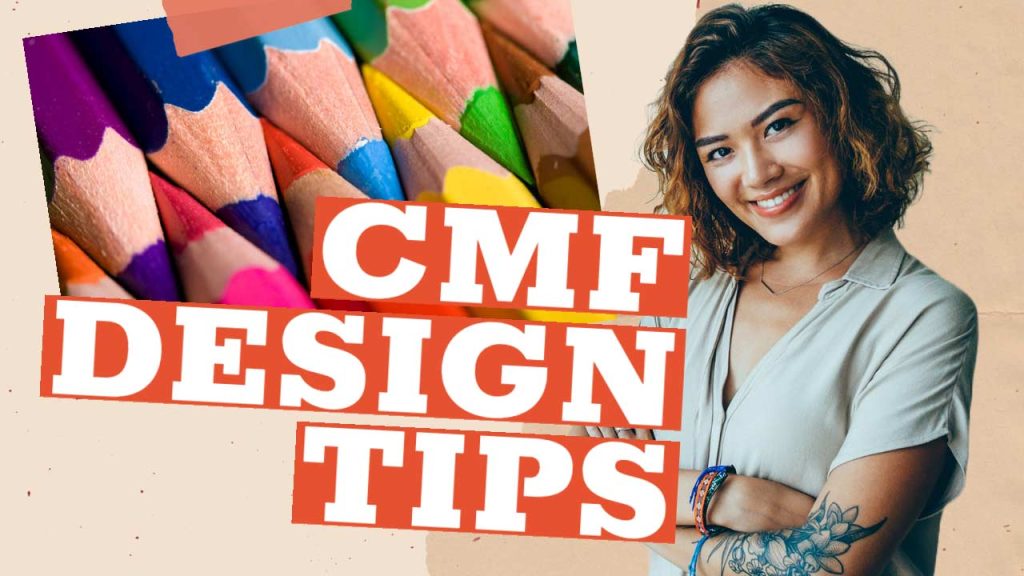As a CMF Designer, an efficient CMF Design Process is crucial for your success. Color, Material & Finish Studies are the essential foundation of excellent design work. But what new tools can be used these days to create fast, efficient, and excellent CMF Design Studies?
Why Every CMF Designer Should Know This
It’s time to explore new techniques & tools to improve your Digital Design Process. Master your CMF Workflow, boost your design output, and level up.
In this article, I am straightforward with the biggest CMF problems modern Designers have to deal with. And at the same time, I am showing practical and efficient solutions on how to overcome all those problems and how to produce faster and better CMF Design Work.
Get ready, buckle up and let’s see behind the curtain of an Unreal Engine Artist.
The Three Biggest Changes in CMF Design
- CMF Creation – Color, Material, Finish
- Lighting
- Real-Time Visualization
CMF Creation | Color, Material, Finish
Your Design Work depends on the right selection of materials. And the creation and exploration of new materials. And of course, you have to apply materials to your product in order to visualize how your CMF choices impact overall the entire design. Regardless if it’s a Product Design or Interior Design.
How to do all that?
A CMF Designer is facing multiple problems during the design process. Finding, selecting, creating, applying, and visualizing CMF (Color, Material & Finishes) is very challenging and oftentimes very time-consuming.
Successful Interior designers know how crucial and essential it is to have a design process in place, that allows them to overcome those challenges quickly. And how to move fast with different design ideas, color variations, material adjustments, and different finishes.

Clients do have high expectations, are very demanding, and want to get your design ideas quickly. On top of it every professional CMF Designer is usually working against stressful Deadlines.
As we all know, there are a lot of different questions just within the Material Creation Process.
- How to find quickly great materials?
- How to create new interesting materials?
- How to compare different color palettes, patterns, fabrics, etc.?
- How to quickly select interesting finishes?
- And how to make quick material adjustments?
- How to create quickly different material variations and options?
Soon, you’ll find on my CMF Design Blog more in-depth tutorials covering the entire process of how to create custom materials for your CMF Design.
How To Create Quickly Different CMF Design Variations?
It doesn’t matter if you are working in Retail Design, Aviation Design, Automotive Design, or any other Design Industry. The tools, techniques, and design process I am sharing on my 3D Design Blog can be applied to literally every Design Niche.
For example, let’s imagine you work in the Aviation industry. And your job is a new CMF Study on a private jet seat. The seat hardware itself needs to have fresh look. Meaning, you need to apply quickly new color palettes, new materials, and new finishes.
In my CMF Design Video above, I show in more detail how to do that quickly using my favorite real-time tool to get this job done. As you can see, you have a lot of options to quickly assign different materials. Change colors, tiling, scaling, patterns, the overall material domain, and finishes.
Lighting
No Lighting, no Design. As simple as that. Lighting has always been very important since it’s the essence of the look and feel. An amazing material can look very dull and crappy if the lighting environment doesn’t support the brilliance of the material. Not even that. The lighting has such a strong influence on the material, that colors can appear completely different.
Traditional CMF Design schools have been creating a Studio Environment, in which the lighting consistent with a neutral white light source. However. Not every company can provide an old-school designer lab, in which products are modeled and fabricated.
In today’s world, CMF Design happens digitally. And not just in 2d. Nope. As we will learn more and more on my blog, 3D Design is the key to output multiple CMF Design Studies.
The World of 3D allows Designers to re-create any lighting needed. Studio Lighting can be set up, but it’s also possible to simulate physical correct outdoor lighting. Including all complex interior lighting studies.
Especially for Interior Designers, Lighting is key and an essential design element for professional CMF Design work.
In my Video Tutorials, I am showcasing the importance of lighting. Furthermore, I explain in detail what Tools I am using to re-create all kinds of different lighting environments.
No matter if it’s for Retail Design, Automotive Design, Aviation Design, Product Design, etc. Lighting & Rendering is an Art on their own and a professional CMF Designer should never underestimate the power of professional Lighting Environments.
That being said. I think at this point it is very clear, that a Lighting Tool is an essential component for CMF Designer. And it’s also clear, that it would be very complicated and extremely costly to set up different Lighting Scenarios in real life.
Therefore, it is clear, that Digital 3D Design, 3D Lighting, and 3D Real-Time Rendering are a MUST HAVE TOOL for every successful CMF Designer.
What is Real-Time Visualization?
Real-Time Visualization is the instant rendering process of an image. Meaning, the user that is applying or changing specific parameters can instantly visualize the outcome of that scenario. That applies to all processes connected with 3D Computer Generated Images (CGI) that do support Real-Time Rendering.
Especially the immediate visualization of different Lighting Scenarios and the Material Changes (Color, Material, Finish) are extremely valuable for the Design Process.
In the world of 3D Computer Graphics, the Technology of Real-Time Visualization was not available for a long time. This was changing with new Game Engines (Render Engines) that support Real-Time Rendering. As you might know, my favorite tool is Epic’s Unreal Engine. You can find many tutorials about it on my Blog or YouTube Channel also covering specific topics for CMF Designer.


